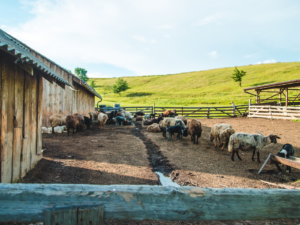
The amount of information available to us today is unprecedented. This ever-increasing rate of information is augmented by the constant evolution of technological devices that are shortening the gap to consumption, from stagnant PCs to portable laptops to an ever-present smartphone to emerging wearables and ultimately the game-changing AR/VR kits.
In the meantime, digital technology has created numerous choices for how we find, consume, and share content. Platforms for social media, image-sharing, e-commerce, education, communication, streaming, gaming, news, video-on-demand are also ever-evolving, marking the greatest period of information creation and consumption.
Noticeably, the Lebanese scene has its share of innovative digital startups and entrepreneurial endeavors who have joined global players in disrupting traditional media outlets, journalism, marketing strategies, and even traditional social communities.
Berytech writes about the trends influencing content creation and media while highlighting the insight, challenges and innovation of startups in the ecosystem in general and in its community in particular.
Global Trends in Content, Media and Technology
The average global consumer spends 82 hours per week consuming information which means that roughly 69% of our waking hours are engaged in consuming information.[1]
The media and entertainment landscapes are changing. Social navigation is a large and increasing way of how people discover, engage with, and consume news and entertainment content on their phones as we continue to witness a high reliance on Facebook for news discovery. Smartphones are the preferred method for consumption as bigger screens are losing share.
Needless to say, TV as we know it is dead. According to a Deloitte survey, ‘consumers are “piecing together” their media and entertainment experience from a growing variety of options as they are increasingly looking to online streaming and other types of entertainment to customize their entertainment experience through multiple subscriptions while video content dominates.[2]
Ephemeral content keeps gaining popularity with Instagram’s Stories as the biggest example: short, engaging, and addictive. Niche social platforms are performing well, with TikTok being one of the fastest-growing social platforms while the gaming community flocks to Twitch.
Video content is one of the most engaging forms of content and will soon dominate social media – a clear winner over all other types of content. Whether it is short-form videos like those popular on TikTok or Stories or long-form content on YouTube, videos are the future of social media content.
Brands leveraging user-generated content is not a new trend but is a trend that is still going strong and will continue to do so.
Social commerce is well on its way to becoming a mainstream retail channel on par with other mediums like websites and offline stores. This trend will strengthen further with more and more social networks introducing pro-selling features like shoppable posts.
Social Media communities, while also not new, are becoming more popular now than ever before. These are social groups that are created by brands to provide a networking platform for their customers. These are usually private groups that like-minded people can join to talk about their shared interests. Facebook Groups are a brilliant example of these social communities. Part of its online strategy, Berytech has been focusing on creating communities through designated Facebook groups to encourage the exchange of knowledge and expertise. Discover the Berytech Fab Lab Community and the Agritech and Cleantech Entrepreneurs Community.
Replacing Mainstream Media and Focusing on Social Impact
The reliance on social media platforms, especially Facebook, for news is a double-edged sword especially in critical political times such as the uprising in Lebanon driving people to the streets since October 2019.
Social media is seen as an enabler of free information. Yet, the risks of misinformation and manipulation increase exponentially especially when carried out by political parties running organized, large-scale, and well-funded campaigns – a global phenomenon that has emerged from Brazil to France and India. When local mainstream media channels are also perceived to be affiliated to these same political parties, accessing objective, honest news and information become vital.
Enter the independent online news platforms and digital communities who have used their influence to transmit accurate information or mobilize its community members to create a positive impact both online and offline.
Gino Raidy, the founder of Gino’s Blog, is an activist and an influencing voice in Lebanon’s continuous uprising. The blog that he started in 2009 covers happenings in art, photography and music while its current intensive focus is the country’s economic and political situation. Raidy uses social channels for live coverage of his presence in protests, without failing to put forward his thoughts while calling people to action, “I take positions that I believe in deeply. People trust me because I never publish anything without elaborating on how I got to that conclusion. Also, after 10 years of publishing, people tend to remember that it’s been consistent.”
One platform that has succeeded in reflecting the developments of the local uprising by creating engaging videos and visuals is Megaphone, an independent online media platform. Although the platform was created in 2017 by a volunteer-based, multidisciplinary team of young journalists, researchers, and designers, it has become a popular resource for the October revolution. As mentioned on their website, Megaphone “aims to demystify Lebanese politics, and bring it closer to audiences that feel alienated by the approach of mainstream media. The platform likes to be medium-specific and meet its audience where it dwells. We act as a watchdog to both the political establishment and the media landscape, exposing misleading and inaccurate stories and statements. Megaphone is independent of all political groups. We only accept financial support that is free from editorial restrictions, to ensure that our editorial line remains uncompromised by funding.”
“Megaphone started as a self-funded organization run by volunteers. The drive was never profit, but rather the mission. With time, we managed to receive small grants to cover core costs, but we still relied mostly on volunteers. Of course, this was an impediment for key roles, particularly managerial ones, but we made do, and for a while it was enough. Megaphone runs on slow journalism, so we were able to manage according to volunteer after-hours time schedules. This changed on October 17, 2019 when our role grew and our production drastically increased with the start of the uprising. We put in a big effort to get more grants and add team members to the payroll. We’re also trying to come up with a monetization plan by offering production services to other organizations,” explains Jonathan Dagher, journalist and member of the Editorial Board with Megaphone.
“Megaphone is built and shaped by volunteers. We do not have a corporate culture, bur rather a culture of camaraderie. That’s mainly due to the fact that Megaphone’s mission was, for a long time, the only drive we had. This dynamic played a big role in shaping Megaphone as a collective that’s as much about the relationships between its team members as it is about the product. The dynamic of volunteer vs. staff doesn’t exist. I would say the only major difference between the two groups is that paid members commit more hours per week because they can afford to.
Volunteer culture has also organically created a spirit of collaborative decision making and self-critique. Because there is no culture of hierarchies, we feel comfortable voicing concerns, pitching ideas, and breaking certain moulds, usually in casual, non-bureaucratic ways. The drawback, of course, is that volunteering isn’t sustainable on the long run. Now more than ever, our goal is to put as many members on payroll as we can.”
The uprising witnessed the reliance of the public on stories broadcasted from the streets by bloggers and digital and social influencers, who have used their influence to reflect the truth of the events and to prompt action.
A powerful online initiative that has mobilized its online communities is Live Love. While the initiative was born 2012 and has focused its influence on positive social impact in the past few years, it has jumped into action to be an active part of the uprising and to alleviate the tragic social impact caused by the economic crisis in Lebanon.
Co-founder, Eddy Bitar explains that “Live Love is an independent media platform with a responsibility to positively influence its community and not just during the revolution. We live in a country that faces many challenges that we need to deal with. Using social media, we are capable of creating change in the direct environment of our 315 communities dispersed all over Lebanon and around the world. We have a responsibility to use our influence to unite people, drive them into action, and build the country we all dream of. Being part of the revolution, our messages are always honest and straightforward, with no bias or rejection of any party. Our mission is to find tangible solutions to implement together, to lead our communities by example.”
News and Media Aggregation
While it is impossible to keep up with all the information circulating online, media and news aggregators are, more than ever, delivering a smarter more personalized experience for their users. Aggregation platforms will allow you to customize your news stream by topic, industry, area, etc., delivering more relevant articles based on the platform’s artificial intelligence. With the proliferation of fake or manipulated content, news aggregators face the challenge of sifting through authentic news from different sources.
Jeanette Bejjani, Managing Director of Mobilonia, explains how appdater, a customized news app is powered by an Artificial Intelligence news engine to deliver real-time, AI-curated content according to user interest. The app that is available in 20 countries offers its users options for flash news, trending articles in their favorite segments, customized news based on their interests, and the ability to follow their favorite channels. “AI news engine provides a robust classification and clustering of content belonging to the same kind of information. The intersection of similar contents coming from different reliable sources leads to more safe and trusted content.” This allows the app to be a trusted source for news.
Another challenge faced by aggregators is generating traffic and retaining users, as competition for user attention is fierce, to say the least.
Limelines is a content curation app designed for the MENA region, on which Berytech has become a regular contributor. CEO Rime Diab elaborates on the app’s strategy to attract and retain users: “New platforms have long journeys ahead of them and it pays off when they invest in building strong values from inception. That’s the only way to build a differentiated product that users get attached to.
At Limelines, it was important from the beginning that the whole team understands the importance of having a core community message and user empathy as part of the product design and business growth. We promise our community of users to curate fresh news and stories from the region (MENA) on hundreds of topics written by thousands of local publishers, big and small, in three languages to cater for the multilingual audience and use machine learning to customize and personalize the content for them.
When users open the website or the app, we want them to feel like they have entered their world, a white and fresh green color, ability to choose the language they like to read in, then choose and follow from the many inspirational topics and newly discovered local and specialized publishers to read the content they love and that is worth their time, not just randomly aggregated content We work very hard to make every screen magical and speaks our vision, using advanced processes, technologies and carefully designed minimalistic screens.”
Another form of aggregation is seen in the innovative MAD platform that allows the discoverability of new artists and their work. With its unique interface, the platform allows musicians, artists, and designers to present their work while it invites the users to discover, meet, and buy from their favorite artists. It also connects artists to brands opening the channels to collaboration. In its multilane highway, the platform organizes MAD events to bring their audience closer to the artists. [Read their success story here.]
Video on Demand and Local Production
While giants in VOD including Amazon, Google Play, iTunes, Disney, and Netflix are in a subscription-based war as they try to differentiate based on genre, Cinemoz is a Lebanese startup that has emerged as a pioneer in Arabic content targeted to the Arab world. The platform was founded based on a gap in the availability of original Arabic content in the Arab world and has grown to build an audience of 7 million users. Another opportunity that the startup has jumped on is producing innovative Arabic content to sell to international platforms as these try to gain market share within the Arabic speaking audiences. To date Cinemoz remains subscription-free, differentiating itself from emerging VOD platforms in Lebanon and the region. [Read their success story here.]
Lebanon is a fertile land for content production with all the creative talent it carries. Phillip Aractingi knows that all too well. His company Fantascope has produced and co-produced over 140 films including features, documentaries, and promotional films. As video continues to be one of the most consumed content online, Phillip explains the fact that we have a lot of technology available at the tips of our hands making it easier to create any form of video content. “What differentiates good video content is whether it dives into the emotions of the viewer. So much has been done already that it is not easy to re-invent the wheel at all but any video or film that needs to be produced needs to go deeper and be more realistic and be meaningful to the person watching. Emotion in every aspect of storytelling is what differentiates exceptional content.”
Storytelling and Arabic Content
Labneh and Facts is another online media startup that is aiming to create an impact. The two co-founders, who won the Femme Francophone Entrepreneure competition in 2017, are using their storytelling talents to portray the country positively, shedding the light on Lebanese changemakers and bringing forward topics that matter for the social and economic development of Lebanon. The platform has broadened its reach by publishing in both English and French.
While it is already laborious to grow a startup, the local economic crisis is thinning out resources for struggling entrepreneurs, challenging them to innovate, or die. “The original idea to generate cash flow for Labneh and Facts was to have a mix of grants from donors and income from communication and publishing activities for NGOs, entrepreneurs, and changemakers,” explains co-founder Marie Jose Daoud. “With the economic crisis in Lebanon, communication budgets were the first ones to go or at least to be drastically reduced, so we are looking into other alternatives such as training, coaching, masterclasses, etc.”
Content creation platforms already face cut-throat competition in innovating content that engages their audience. Elsa Aoun, co-founder of Ounousa, one of the first women-oriented Arabic content creation platforms in the region explains, “It is becoming more complex to create innovative content given the speed at which information is flowing and the increased access to new resources, whether on search, social media or blog posts. What we strive to do at Ounousa is to make our content personal, something you can identify with. It’s personal when we provide real tips that work for the mother struggling with her kids. It’s also personal when we make fashion more inclusive by presenting collections that cater to different cultures. When content resonates with an audience, they become more engaged and thus willing to come back for more.
Most importantly, we find that innovation comes with the format of the content. We acknowledge the power of social media in creating and amplifying trends, so we embrace it and we work with it. We create articles that are a combination of in-house editorial input and social media resources; we refer to what communities are talking about by following hashtags; we place our sources at the center stage by featuring them in videos; we also step aside and let our users take the lead in providing authentic reviews on products.
One of our recent projects was Ounousa Reviews, a platform we built independently from Ounousa (in English this time) to enable users to become real reviewers; sharing what they genuinely thought about products they tested and tried, away from any commercial incentive. It has created a real sense of community!” [Read her success story here.]
Investing in Media and Content
Cultural and creative industries should be part of economic growth strategies, according to the UNESCO report on culture and sustainable development. These industries are among the most dynamic sectors in the world economy, generating $2.25 billion in revenue and 29.5 million jobs worldwide. The creative economy – which includes audiovisual products, design, new media, performing arts, publishing, and visual arts, is a highly transformative sector of the world economy in terms of income generation, job creation and export earnings. Culture is an essential component of sustainable development and represents a source of identity, innovation and creativity for the individual and the community. At the same time, creativity and culture have a significant non-monetary value that contributes to inclusive social development, dialogue and understanding between peoples.
Paul Chucrallah, Managing Director of Berytech Fund II, explains the fund’s decision to invest in startups in general and content and media startups in particular: “The investment policy of Berytech Fund II is to invest in companies that can scale and that have good teams. When we invested in Ounousa, Appdater, Cinemoz, and Atbaki and in some cases re-invested in them, they looked like they had very good investment plans and prospects and that if they worked, their ideas could scale. If you get it right in the online world you can scale very quickly and have a lot of potential for growth and profit.”
For his part, General Manager of IM Capital Nicolas Rouhana details the fund’s investment decisions. “Our decision to invest in Cinemoz, for example, was based on several factors: passionate and experienced founders, solid local proprietary technology and original content, ready-to-scale business model, the product has shown good traction and brand name and it falls in line with IM Capital strategy in supporting the Lebanese movie ecosystem. The latter is also why we invested in the feature film ‘Listen’ produced by Fantascope, but also because it had an award-winning director/producer and because it generates jobs for talented youth. We invested in MAD because we aim to support women entrepreneurs and Lebanese artists, but also because they had a scalable business model with high margins.”
Content and media startups remain integral to Berytech’s strategy to shape the innovation scene in the region and to catalyze economic growth and create jobs in Lebanon.
[1] Source: Loup Ventures








